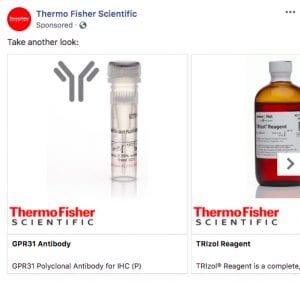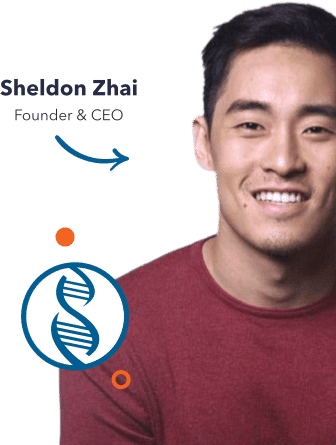Digital Strategy
5 Minutes
Drinking Raw Egg Yolks and $15 Leads ????
Have you ever tried something that you never thought would be good until you did it?
Last year around this time, the Supreme team went on a company off site ski trip all the way to Bulgaria. We went through team exercises from “The 5 Dysfunctions of a Team”, worked together, sang karaoke, drank a lot of alcohol, and even shared personal life hacks to each other.
Leigh Wasson, our Chief Marketing Officer had been working lot a lot over the past few months but wasn’t seeing some of the results that he wanted to. On the other hand, Ben Duffield, our Facebook advertising manager, had been getting some amazing results in the gym and wanted to share one of his secrets.
Drinking raw egg yolks.
Yep, you heard it.
We thought it might have been just a British thing, but apparently Ben picked this up after watching the movie “Rocky”.
Leigh was a bit skeptical at a first, but as an open-minded guy, he decided to give it a try.
Check out the video below to see what happened next…

Leigh (left), Ben (right)
In the end, Leigh almost threw up but at least gave it a try. I don’t think he still drinks raw egg yolks and it just wasn’t for him.
However…
Life is about experimenting. Testing to see what works and what doesn’t specifically for you. Ben had an open mind and found something that worked for him. Leigh probably will never drink raw egg yolks again in his life.
Digital marketing isn’t a whole lot different.
It’s about experimenting, testing, optimizing, and… profiting.
Today, I wanted to share with you something that has been working extremely well for our life science clients.
This is something that we first attempted as a test. We didn’t really expect a great outcome, but the results were fantastic, and it is now a marketing strategy we use with many of our clients.
The strategy that we have been using is Facebook Ads.
Most people in our industry think of Facebook as a place where people are posting clickbait and other personal things that young people like. News flash, the young people on Facebook today aren’t so young anymore. Many are in their thirties, completing their Ph.D.’s, and moving on to their post-docs.
Facebook has been so powerful for the companies we partner with that it often is outperforming all other channels on a cost per acquisition basis.
On average, the life science research product providers that we’re running ads for are paying around $15-$30 per lead.
It is quite counter intuitive for life science companies to use this channel for their marketing. The typical reaction is that the audience won’t be on this platform.
But we have found that they are in fact on Facebook. Data never lies (unless your conversion tracking is awful…)
Since most companies in life science aren’t advertising on Facebook, clicks are very cheap, and subsequently the cost per acquisition is very low.
But gradually, there are more competitors moving into the space. Recently we have even noticed the big guys spending a lot of cash such as ThermoFisher and Abcam.
In fact, Facebook even has a case study on Qiagen’s results marketing on Facebook. Florian Wegener, VP, Head of E-Commerce at Qiagen claims, “We’re now selling instruments of $10,000 each on Facebook.”
There are 2 types of Ads we have seen work very well on Facebook:
- Remarketing Ads with Lead Gen Forms
- Dynamic Product Ads (DPAs)
Remarketing Ads with Lead Gen Forms
This is remarketing back to visitors of products or services pages within the Facebook news feed.
As these prospects have just visited those pages, they have shown an interest and are quite warm.
A strategy that we have used is to take a product category and remarket relevant product brochures or product sheets back to product page visitors.
Here are a couple of examples:


Using Facebook Lead Forms, the Facebook User submits a form pre-populated with their information pulled directly from their profile information.
These forms have a high conversion rate as the user does not have to fill out their information nor have to click to another landing page.
Pro Tips:
- Use an image that grabs attention.
- Ensure you are remarketing back to a page or set of pages with at least 2000 visitors per month for the set up cost to be worth it.
- These prospects have visited your products and have just downloaded a brochure or product sheet. They are hot, so ensure you have a process to follow up with them quickly.
Dynamic Product Ads (DPAs)
These work best with commoditized products below $100.
Remarketing DPAs
These are similar in that we take visitors of specific product categories, and we remarket back to them with the Ads of the same products or other similar products.
This is typically done with a carousel of product images bringing them back to the product page.
Here is an example of a Thermofisher DPA:

Abandon Cart DPAs
If a customer has added something to their cart, but not purchased, these ads will show their abandoned item similar to the carousel example above.
We have found it very effective to bring them back with an incentive like a 10 or 20% discount on their cart.
Cross-sells and Up-sells
After customers have purchased, these ads will display other items that they might be interested in.
Great for selling other commoditized products as add-ons within the same product category.
One More Thing…
There is actually a 3rd Facebook campaign strategy that has also worked very well:
Cold Audience Ads with Lead Gen Forms.
This strategy targets audiences at the top of funnel and it is fantastic for increasing your email list.
Our latest Cold Audience/Lead Form campaign has been getting a cost of lead acquisition of $2.90:

What We Learned From Facebook Advertising
We learned that within digital marketing, it is always important to test new strategies and new marketing channels, even if it is counter intuitive.
Online behaviours and online technologies move fast, and we have to too.
This test turned out to be a massive win for us and our clients.
On the other hand, Facebook might not be the best channel for your products or services just like drinking raw egg yolk isn’t for everyone. The entire point is that you need to balance being open minded to trying new things with knowing as much as possible.
My favorite book of the year, “Principles” by Ray Dalio talks about this quite a bit. If you don’t know Ray, he’s worth $18.1bn and is the Founder of Bridgewater Associates, the world’s largest hedge fund.

If you want to be successful, ultimately you must be open minded to new ideas, but also know as much as possible. If you aren’t open minded, then you won’t be able to harness collective intelligence and adopt new transformative ideas. On the other hand, if you don’t know enough, then you’ll be constantly swayed in many directions without enough gut intuition to choose the right path.
Here’s to your growth,
Sheldon Zhai
Related Posts
Get a Quote or Ask a Question
- Curious about our process or pricing?
- Need help getting buy-in?
Contact us right away — we’d love to help.
Let’s take a look at your website together and figure out your best options for business growth.

Contact us right away — we’d love to help.
Let’s take a look at your website together and figure out your best options for business growth.



